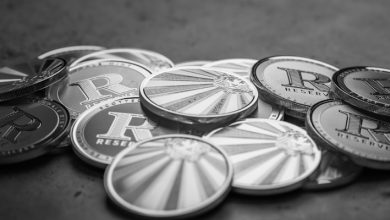How to Spot Scam Tokens and Rug Pulls

- Understanding the basics of scam tokens and rug pulls
- Red flags to look out for when investing in cryptocurrencies
- How to research a token before investing to avoid scams
- Common tactics scammers use to lure investors into rug pulls
- Protecting yourself from falling victim to fraudulent token schemes
- What to do if you suspect you have invested in a scam token or rug pull
Understanding the basics of scam tokens and rug pulls
It is crucial to understand the basics of scam tokens and rug pulls in the world of cryptocurrency. Scam tokens are fraudulent digital assets created by malicious actors to deceive investors into thinking they are legitimate investments. These tokens often promise high returns with little to no risk, enticing unsuspecting individuals to invest their money.
Rug pulls, on the other hand, refer to a type of scam where the creators of a token suddenly abandon the project after attracting a significant amount of investment. This results in the value of the token plummeting, leaving investors with worthless assets. Rug pulls are a common occurrence in the cryptocurrency space and can cause substantial financial losses for those involved.
Red flags to look out for when investing in cryptocurrencies
When investing in cryptocurrencies, it is crucial to be aware of the red flags that may indicate a potential scam or rug pull. By staying vigilant and conducting thorough research, investors can protect themselves from falling victim to fraudulent schemes. Here are some key red flags to watch out for:
- Anonymous Team: One of the major red flags in the crypto space is an anonymous or undisclosed team behind a project. Transparency is essential in the world of cryptocurrency, and a lack of information about the team members could indicate that they have something to hide.
- Unrealistic Promises: If a token promises high returns with little to no risk, it is likely too good to be true. Scammers often lure in investors with promises of quick and easy profits, only to disappear with their money once the scheme is exposed.
- Lack of Utility: Another red flag is a token with no real-world use case or utility. A legitimate cryptocurrency should serve a purpose beyond just being a means of speculation. Without a clear utility, the token may have no value and could be part of a scam.
- Poor Code Quality: Investors should also be wary of cryptocurrencies with poorly written code or security vulnerabilities. A lack of attention to detail in the technical aspects of a project could indicate that the developers are not competent or may have malicious intent.
- Unaudited Contracts: Smart contracts are an essential component of many cryptocurrencies, and unaudited contracts can pose a significant risk to investors. Without proper security audits, the contract may contain vulnerabilities that could be exploited by scammers.
By keeping an eye out for these red flags and conducting thorough due diligence before investing in a cryptocurrency, investors can minimize the risk of falling victim to scams and rug pulls. It is essential to approach any investment opportunity with caution and skepticism, especially in the rapidly evolving and often unregulated world of cryptocurrencies.
How to research a token before investing to avoid scams
When considering investing in a token, it is crucial to conduct thorough research to avoid falling victim to scams or rug pulls. By taking the time to investigate the token and the project behind it, investors can make more informed decisions and reduce the risk of losing their funds. Here are some key steps to follow when researching a token before investing:
- Check the token’s website: Start by visiting the token’s official website to gather information about the project, team, roadmap, and tokenomics. Look for red flags such as a lack of transparency, plagiarized content, or unrealistic promises.
- Review the whitepaper: The whitepaper is a crucial document that outlines the token’s purpose, technology, use cases, and distribution. Pay close attention to the team’s qualifications, the problem the project aims to solve, and how the token will be used within the ecosystem.
- Verify the team: Research the team members behind the token to ensure they are real and have relevant experience in the blockchain and cryptocurrency industry. Check their LinkedIn profiles, Github contributions, and any past projects they have worked on.
- Look for community engagement: A strong and active community is a positive sign for a token. Check social media channels, forums, and chat groups to see how engaged the community is and whether there are any red flags or concerns raised by investors.
- Check for audits and partnerships: Tokens that have been audited by reputable firms are generally more trustworthy. Additionally, partnerships with established companies or projects can add credibility to a token. Look for evidence of audits and partnerships on the token’s website or social media channels.
By following these steps and conducting thorough research, investors can better assess the legitimacy and potential of a token before making any investment decisions. Remember, it is always better to be safe than sorry when it comes to investing in the volatile world of cryptocurrencies.
Common tactics scammers use to lure investors into rug pulls
Scammers often use a variety of tactics to lure investors into rug pulls. One common tactic is to create a sense of urgency by claiming that the token is about to skyrocket in value. They may use aggressive marketing techniques to pressure investors into buying quickly without doing their due diligence. Another tactic scammers use is to promise unrealistic returns on investment, making it seem like a surefire way to make a profit.
Additionally, scammers may try to establish credibility by using fake endorsements from celebrities or influencers. They may also create fake reviews and testimonials to make their project seem more legitimate. By creating a false sense of trust, scammers can manipulate investors into believing that their token is a safe investment.
Another tactic scammers use is to withhold key information about the project, such as the identities of the team members or details about the technology behind the token. By keeping investors in the dark, scammers can prevent them from making informed decisions about whether or not to invest. It’s important to be wary of projects that are not transparent about their operations.
Protecting yourself from falling victim to fraudulent token schemes
Protecting yourself from becoming a victim of fraudulent token schemes is crucial in the ever-evolving world of cryptocurrency. By staying vigilant and following some key steps, you can significantly reduce the risk of falling prey to scams and rug pulls.
First and foremost, always do thorough research before investing in any token. Look into the project team, their experience, and the token’s whitepaper to ensure legitimacy. Additionally, check the token’s community presence and engagement to gauge its credibility.
Another important step is to be wary of promises of high returns with little to no risk. If an investment opportunity seems too good to be true, it probably is. Avoid tokens that use aggressive marketing tactics or pressure you into making quick decisions.
Furthermore, only use reputable and secure cryptocurrency exchanges to buy and trade tokens. Be cautious of tokens that are not listed on well-known exchanges or have limited liquidity, as these can be red flags for potential scams.
Lastly, trust your instincts and don’t hesitate to seek advice from trusted sources or professionals in the cryptocurrency space. If something doesn’t feel right or you have doubts about a token, it’s better to err on the side of caution and avoid investing altogether. Remember, protecting your investments is paramount in the world of cryptocurrency.
What to do if you suspect you have invested in a scam token or rug pull
If you find yourself in the unfortunate situation of suspecting that you have fallen victim to a scam token or rug pull, it is important to act swiftly and decisively. The first step is to stop any further investment or interaction with the token in question. This will help prevent any additional losses and protect your assets.
Next, it is crucial to gather as much information as possible about the token and the project behind it. Look for red flags such as anonymous teams, unrealistic promises, and lack of transparency. This information will be valuable when reporting the scam to the appropriate authorities.
After collecting evidence, it is recommended to report the scam token to platforms such as CryptoScamDB, which help warn other investors about fraudulent projects. Additionally, consider reaching out to regulatory agencies such as the Securities and Exchange Commission (SEC) or the Commodity Futures Trading Commission (CFTC) to report the scam and seek further guidance.
Finally, it is essential to learn from this experience and take steps to avoid falling victim to similar scams in the future. Conduct thorough research before investing in any token, look for reputable projects with transparent teams, and always trust your instincts. Remember, staying informed and vigilant is key to protecting yourself in the ever-evolving world of cryptocurrency.



